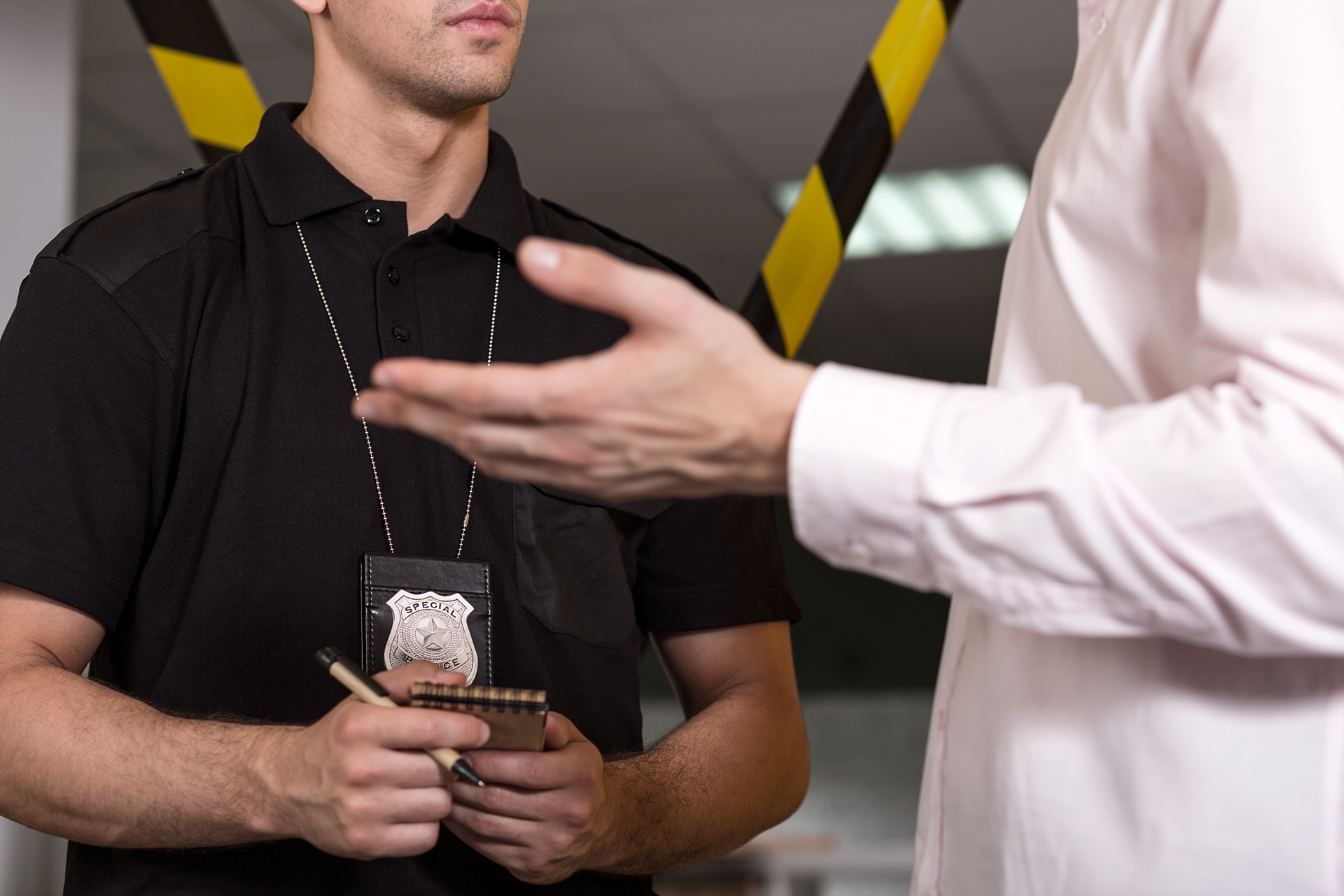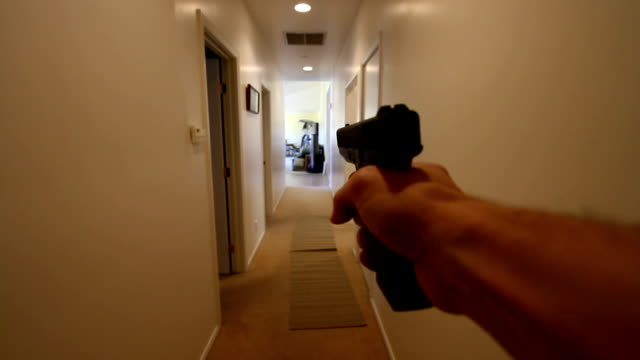Join Officer Adam Painchaud on patrol, as he shares what to do if you are involved or near a shooting incident. Involved in shooting incident. You’ll hear what to do if you are in an incident, and what not to do when police are on the scene. You’ll discover what to think about when police respond, as well as what their first priority is. Officer Painchaud shares why you need to give as much information as possible, and gives the best advice for when you are in an incident.
Officer Adam Painchaud has transitioned to being the President and Co-Founder of E3 Firearms Association, as he continues to serve as a police officer. Adam remains active helping with training agencies, SWAT teams, and the community. He is dedicated to making a positive difference in the firearms community and in people’s lives. Adam is the driving force behind E3 Firearms Association.

Navigating a Shooting Incident: Guidance for CCW Holders | Shooting Incident Preparedness
Shooting incident preparedness is critical for concealed carry (CCW) holders who may face or witness a violent event. The chaos of a shooting demands quick thinking and informed actions to ensure safety and legal compliance. This article, guided by insights from the E3 Firearms Association, explores how to respond effectively during and after a shooting incident. We’ll cover police priorities, best practices, and training tips. Our big idea: with proper shooting incident preparedness, you can stay safe and cooperate with law enforcement confidently.
Understanding the Dynamics of a Shooting Incident
A shooting incident creates a high-stress environment with rapid, unpredictable developments. Whether you’re directly involved or nearby, your actions impact safety and legal outcomes. For instance, police prioritize neutralizing threats, often arriving with limited information. Therefore, CCW holders must avoid being mistaken for a threat. A little-known secret: officers may not distinguish armed civilians from suspects in the initial chaos.
The situational awareness guide from E3 Firearms Association emphasizes scanning for threats, crucial in shootings. Recognizing police priorities helps you respond appropriately. Shooting incident preparedness begins with understanding these dynamics.
Immediate Actions During a Shooting
If a shooting occurs, prioritize safety by seeking cover, not just concealment. For example, a concrete wall offers protection, unlike a bush. If armed, keep your firearm holstered unless you’re directly threatened, as drawing risks misidentification. Moreover, assess escape routes but avoid running toward police, who may perceive you as a threat. Instead, move calmly with hands visible.
A pro tip: memorize the layout of frequent locations, like malls, for faster escapes. The E3 Firearms Association’s active shooter training resource offers strategies for crisis navigation. These actions enhance shooting incident preparedness.
Interacting with Responding Officers
When police arrive, their first goal is to stop the threat, not to assist civilians immediately. Follow their commands precisely, even if they seem abrupt. For instance, if ordered to drop your weapon, comply instantly, as hesitation can escalate tension. However, don’t reach for your gun or make sudden moves. Clearly state, “I’m a CCW holder,” if relevant.
The E3 Firearms Association’s firearms instruction resource stresses clear communication, vital for police interactions. A subtle insight: officers may secure your firearm temporarily for safety. Proper conduct ensures safe cooperation during a shooting incident.
Providing Information to Police
After the threat is neutralized, give police as much detail as possible about the incident. Describe the shooter’s appearance, actions, and last known location. For example, noting a suspect’s clothing or weapon type aids investigations. Additionally, if you fired your weapon, explain your actions calmly, avoiding speculation. However, request a lawyer before giving a detailed statement.
The range preparation guide from E3 emphasizes clear reporting, applicable to post-incident debriefs. A hidden tip: carry a small notepad to jot down details immediately after for accuracy. Providing information supports shooting incident preparedness.
Legal Considerations Post-Incident
Using a firearm in a shooting incident triggers legal scrutiny, even if justified. State laws vary on self-defense claims, with some requiring proof of imminent danger. For instance, Florida’s stand-your-ground law differs from California’s duty-to-retreat. Therefore, understand your state’s laws to articulate your actions. Also, expect police to detain you temporarily for investigation.
The E3 Firearms Association’s concealed carry reciprocity guide clarifies legal nuances, useful post-incident. A lesser-known fact: documenting your training can bolster your self-defense case. Legal knowledge is key to preparedness.
Training for Shooting Incident Response
Training builds confidence for shooting incident preparedness. Courses on active shooter response teach you to assess threats and act decisively. For example, scenario-based drills simulate real-world chaos, improving reaction times. Additionally, practice verbal commands, like announcing your CCW status, to stay calm under pressure. Regular training hones perishable skills.
The E3 Firearms Association’s smart gun technology article explores tools for training, enhancing response skills. Their modular systems guide also covers adaptable gear for crises. Training prepares you for high-stakes moments.
Community and Expert Support
Connecting with a community like the E3 Firearms Association strengthens shooting incident preparedness. Experts like Adam Painchaud, a seasoned officer and E3 president, share real-world tactics. For instance, their SIG P320 off-duty program discusses professional response strategies, relevant for civilians. Forums also offer peer insights on incident response.
The lighting solutions guide suggests visibility tools for identifying threats in low light. Engaging with peers ensures you stay informed and ready. Community support is a cornerstone of preparedness.
Preparing Mentally and Physically
Mental and physical readiness are vital for shooting incident preparedness. Visualize scenarios to reduce panic, like mentally mapping exits in public places. For example, practice controlled breathing to stay calm during stress. Physically, maintain fitness to move quickly or carry gear. However, avoid overthinking, as it can freeze decision-making.
The E3 Firearms Association’s Women on Wednesday series emphasizes mental resilience, useful for crisis response. A pro tip: rehearse simple phrases, like “I’m not a threat,” for police interactions. Preparedness starts with mindset and fitness.
Next Steps for CCW Holders
To excel in shooting incident preparedness, take these steps. First, study your state’s self-defense laws. Next, enroll in active shooter training. Then, practice scenario-based drills regularly. Finally, join the E3 Firearms Association for expert support. Their free firearms magazine is a great resource.
Your call to action: train for a shooting incident today and explore E3’s blog. Stay safe, stay prepared. For more firearms resources and insights, be sure to visit: https://www.e3firearmsassociation.com/blog/.
External Resources
- NRA Institute for Legislative Action - Updates on firearms laws.
- USCCA - Self-defense and incident response resources.
- Bureau of Alcohol, Tobacco, Firearms and Explosives - Federal firearms regulations.
- Giffords Law Center - State-specific gun laws.
- FBI Active Shooter Training - Resources for incident response.

